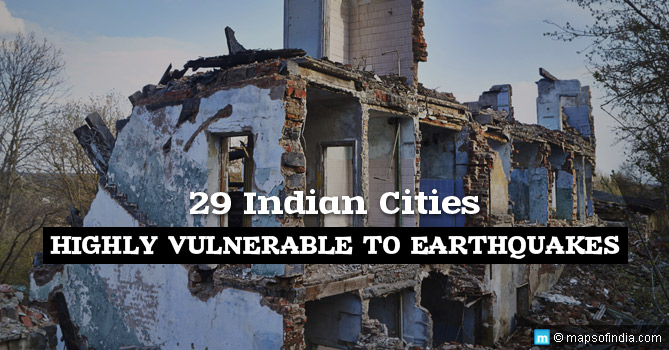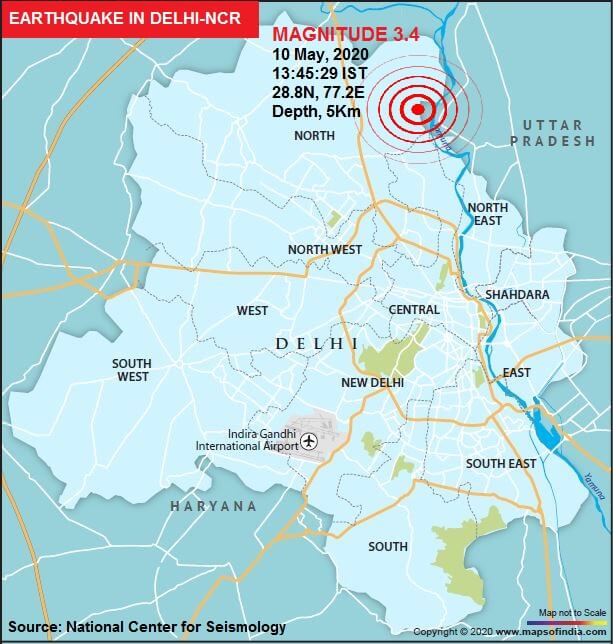The National Centre for Seismology (NCS) has said that 29 cities and towns in India are presently highly vulnerable to earthquakes. In some cases the threat level is severe and in some it is even greater than that. NCS has also said that this list is inclusive of Delhi as well as capitals of nine other states. Most of the places are located in the Himalayas, which in any case happens to be one of the areas in the world with the highest levels of seismic activities. The following cities and towns are included in seismic zones V and IV:
- Delhi
- Patna – capital of Bihar
- Srinagar – capital of Jammu and Kashmir
- Kohima – capital of Nagaland
- Puducherry
- Guwahati – capital of Assam
- Gangtok – capital of Sikkim
- Shimla – capital of Himachal Pradesh
- Dehradun – capital of Uttarakhand
- Imphal – capital of Manipur
- Chandigarh
Condition of these cities
It is estimated that around three crore people live in these cities. The classification of different zones has been done by the Bureau of Indian Standards (BIS). These areas have been divided into four zones – II, III, IV, and V. The classification has been done accounting for the earthquake records in these cities and towns, tectonic activities, and the damage they have caused. This information has been provided by Vineet Gauhlat, the Director of NCS.
Zone V
This is the zone with the highest danger of being susceptible to an earthquake. The areas included in this zone may be enumerated as below:
- The whole northeastern India
- Certain parts of Jammu and Kashmir, Uttarakhand, and Himachal Pradesh
- Rann of Kutch in Gujarat
- Certain areas in northern Bihar
- Andaman and Nicobar Islands archipelago
Zone II is supposed to experience the least amount of seismic activity and Zone IV is regarded as severe. As such Zone II is the region that is least vulnerable to earthquakes.
Zone IV
The following areas of India have been classed as Zone IV:
- Parts of Jammu and Kashmir, Sikkim, and Delhi
- northern Uttar Pradesh
- West Bengal
- Gujarat
- few areas of Maharashtra
Bhuj in Gujarat saw a huge earthquake in 2001. 20,000 people lost their lives in that natural disaster. As such it has been included in the list of Indian cities and towns highly vulnerable to earthquakes. Apart from that, cities and towns such as Chandigarh, Ludhiana, Ambala, Roorkee, and Amritsar have been classified as falling under zones IV and V. M Rajeevan, Secretary of Ministry of Earth Sciences, has stated that by March 2018, 31 new earthquake observatories will be opened across the country. Right now, there are 84 observatories in India. Their main function is to detect earthquakes and record the parameters in an accurate way. They are also supposed to properly identify any and every possible indication of precursors of tremors.
The role played by NCS
NCS works under India Meteorological Department (IMD). It records earthquakes across the country and as such plays a very important role in exercises such as these. It also performs studies related to seismic microzonation, which can be described as a process whereby a region is subdivided into smaller ones on the basis of the potential that each sub region has for seismic activity.





